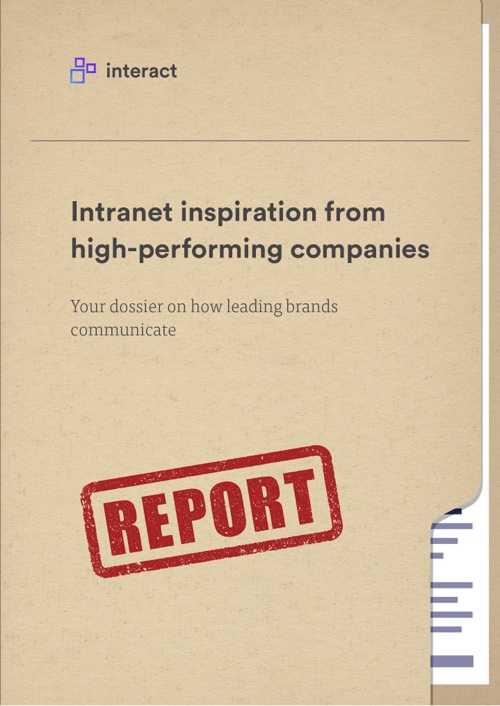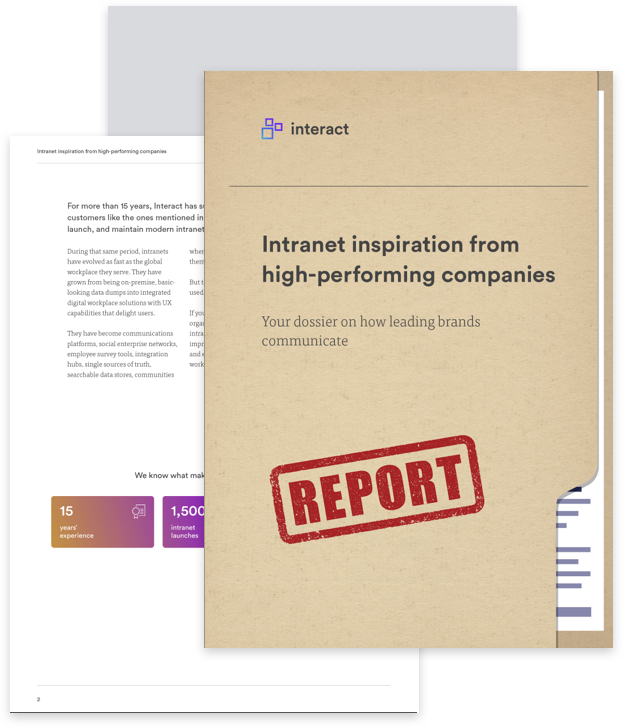Having trouble keeping or attracting employees? You’re not alone. Companies face the toughest labor market in years and the competition for talent is fierce. Given that pay and conditions are often similar, how can you engage and satisfy key workers? These experts say that connecting employees and creating a purpose-driven workplace is crucial.
The headlines about the Great Resignation recently reached a crescendo with Gallup’s cry, Warning: Even Your Committed Employees Are Being Recruited. The article crystallized the current fear running through many organizations that even the most faithful and engaged employees are no longer entirely “off the market”.
Why are employees leaving their jobs?
For one, we know that the pandemic has caused workers to reevaluate their priorities. Whether it’s better work-life balance, better pay, or more flexible working conditions, the restrictions of life since March 2020 have caused an upheaval in what people value, leading to them increasingly opting to work elsewhere.
Internal comms inspiration from high-performing companies
That’s not the only change though. The increase in flexible working and the ability to work from home has erased the boundaries for recruitment, with organizations now hiring more aggressively in formerly off-market talent pools. Recruiters are looking more globally, resulting in them coming for your co-workers (according to Gallup anyway).
What can you do about it?
In such a tough market, ensuring that employees stay with you means more than just offering better pay, it also means creating a culture of trust, respect, and communication. Workers have evaluated their own lives, and many have found that being part of a community in a purpose-driven workplace is worth its weight in gold.
We asked business leaders, owners, and communicators how they help their employees to connect with their organization’s purpose. This is what we found out.
1. A connected workplace is a purpose-driven workplace

Colton De Vos of Resolute Technology Solutions focuses on using communication to connect individual action with company purpose.
“To keep the team in the loop with what is happening at a higher level, we send out a monthly internal newsletter. The monthly update allows us to get kudos and praise messages to employees while it is still relevant to the project or assignment they are working on. In addition to kudos messages, we’ll often bring forward examples of when an employee exceeded expectations aligned to our company’s core values. It helps bring the focus to what they were able to achieve as an individual and how that contributes to what the company is trying to achieve.”
2. Show don’t tell
COO of Sofary, Tom Leighton, suggests the proof of purpose is in the relationship.
“One thing that helps our employees connect with our organizational purpose is offering them a first-hand look at how their work directly impacts others’ lives. It’s one thing to say, “We help people” but it’s another thing entirely to show an employee sitting down with a customer and hearing about all the ways that the customer’s house and life have been changed for the better by using our products.
We also use our internal communication software to share positive customer reviews and applaud the employees responsible for making our customers happy. This public recognition allows our employees to see the direct impact of their work and encourages everyone to continue striving toward the company’s goals and values.
When you can share stories like that, employees really buy into the idea that they’re doing something more than just working a job – they’re helping people elevate their living experiences.”
Internal comms inspiration from high-performing companies
3. Broadcast your beliefs
Custom Neon’s co-founder, Jessica Munday, uses technology to promote an employee-centric, purpose-driven workplace.
“We have initiated an internal intranet platform on which we can share knowledge, training docs, press releases, awards, birthdays, time-off schedules, team members of the quarter nominations, etc. Having an internal platform really gives us an opportunity to drive our mission and values home and be accountable for them.
We highlight the charities we support and how our contributions help. We have also implemented employee recognition programs, which encompass customer feedback, peer nominations, and manager’s choice awards. We promote a recognition-rich culture, where praise is welcome and encouraged from every direction.
By celebrating our global efforts and success, not just in our own business, but also the community endeavors we support we motivate and inspire our team and provide them with the intrinsic knowledge and rewards of supporting more than just our bottom line.”
4. Inclusivity drives a purpose-driven workplace

Trey Ferro, CEO of Spot Pet Insurance, highlights the role of inclusion as a driver of employee buy-in.
“Our inclusion efforts help our employees connect to our organization and create a purpose-driven workplace. From referring to everyone by their chosen names and pronouns to maintaining a dignified in-office environment that includes restrooms, we are proud of these inclusivity initiatives.
We strive to offer our employees the resources they need to thrive both in their personal and professional lives, and we believe this will result in further business development.”
5. Providing purpose for employees is social, not individual
Sarah Jameson of Green Building Elements thinks purpose-driven workplaces start with socialization and collaboration.
“To motivate employees to connect with a company’s purpose and mission it’s necessary to create a sense of belonging among employees and treat them as members of a tight-knit community.
Employees must first feel safe, supported, and respected so they are much more willing to participate. This can be accomplished through feedback, praise, and encouraging them to offer their own perspectives – all of which help to nurture a collaborative atmosphere. This is the first step in tapping into their core values and individual purposes and then slowly aligning them with the company’s.”
Internal comms inspiration from high-performing companies
6. Gather people for purpose-led events
Founder of Innovative Building Materials, Matt Lee, suggests that tying CSR with an event schedule can bond employees and create a purpose-driven workplace.
“If you can identify a community program that fits your company’s goal, you’ll see that workers are drawn to your CSR activities and are more connected overall as a result. These activities raise awareness and boost community, motivating people to develop a better place to live, both physically and psychologically.
I also recommend you design a purpose-driven seminar at least every 2-3 months. These assist employees in discovering their principles, ideal work dynamic, and purpose in their careers. I like to hold seminars both virtually and in-person, run by prominent leaders and executives.”
7. A purpose-driven workplace starts at the top

Jon Hill, CEO of The Energists, believes it’s critical for senior leaders
“My approach can be summed up in two words: transparency and communication. If leadership doesn’t share knowledge about their goals, mission, and progress with employees, there is no way for team members to see how their work contributes to them.
When leaders are transparent and share knowledge openly across hierarchy levels, it allows individual contributors to see how their work fits into the bigger picture, and this in turn helps them to feel that sense of purpose. It also helps guide their decision making because they know why things happen the way they do in the company, rather than blindly following edicts outlined by leadership with no sense of the reasoning behind them.”
Internal comms inspiration from high-performing companies
8. Marry purpose with performance
Steven McConnell is a director at Exceptional Resume Writers. He believes that organizational goals should be brought into the performance review process.
“The best way to connect employees to the corporate purpose is by incorporating it into all aspects of the business. But one area where it is often a missed opportunity is during performance reviews. Managers must make it a point to incorporate a review of the organizational goals when goal-setting and reviewing employees’ job performance to help remind them of how their efforts contribute to the company’s collective success.”
A purpose-driven workplace thrives on communication
Perhaps most fundamental to each of these ways of inspiring purpose in employees is the act of communication.
We must communicate our mission, tell employees where they fit in the bigger picture, and share stories that will inspire them. We need to shout about what makes us different and align them with our business goals.
Internal communication is central to our organizational and wider economic recovery. If we can foster cultures that will connect our employees to something above and beyond the fundamentals of their day-to-day roles, we can transform their engagement with our organizations.
With that added focus, we’ll tap into an amazing power: and drive long-term business success.
How to create a purpose-led workplace: Related topics
- Diversity and inclusion at the 10 Best Places to Work in 2022
- Maintaining a positive workplace culture for your remote teams
- How to build and nurture communities INSIDE your business



